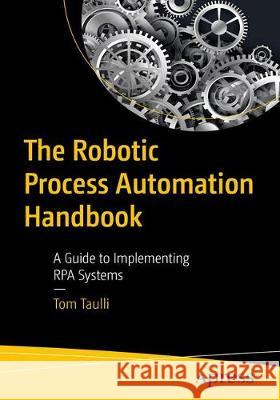The Robotic Process Automation Handbook: A Guide to Implementing Rpa Systems » książka
topmenu
The Robotic Process Automation Handbook: A Guide to Implementing Rpa Systems
ISBN-13: 9781484257289 / Angielski / Miękka / 2020 / 344 str.
Kategorie:
Kategorie BISAC:
Wydawca:
Apress
Język:
Angielski
ISBN-13:
9781484257289
Rok wydania:
2020
Ilość stron:
344
Waga:
0.51 kg
Wymiary:
23.39 x 15.6 x 1.93
Oprawa:
Miękka
Wolumenów:
01
Dodatkowe informacje:
Glosariusz/słownik
Wydanie ilustrowane
Wydanie ilustrowane











